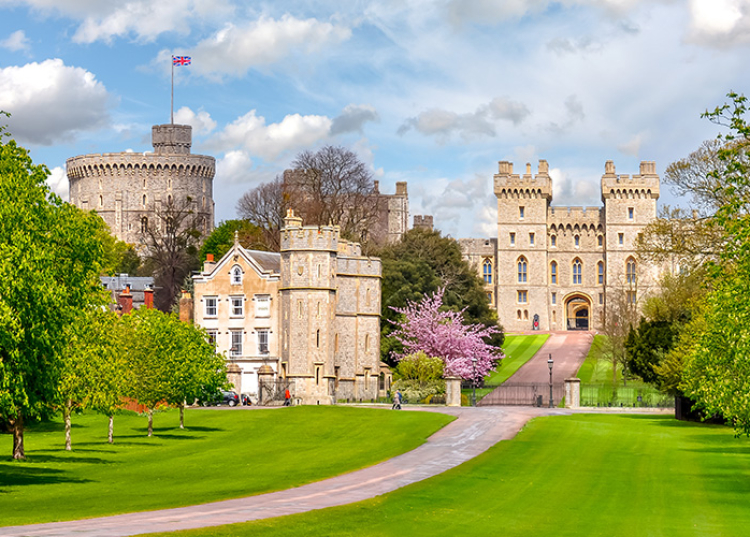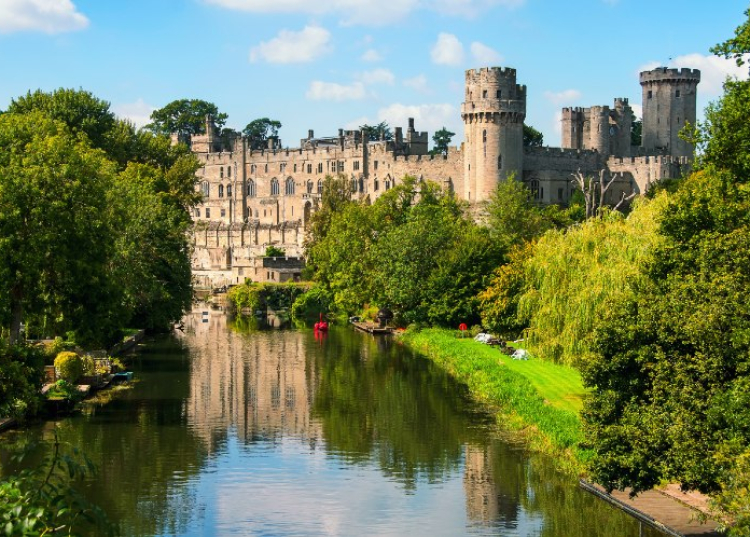England’s castles are some of the best in the world – with the oldest structures dating back to the Norman Conquest in the 11th century, they span a millennia of history, appearing in every style, period and for every reason. Whether you’re interested in Medieval royalty or Second World War history, there’s something for everyone.
With so many brilliant castles to choose from, we’ve compiled a handy guide to 10 of the best Castles to visit in England.

1. Durham Castle
Originally commissioned by William the Conqueror in 1072, Durham Castle was intended to ensure Norman control in the North of England, and was built in the traditional motte and bailey style. It became the seat of the Bishops of Durham who were tasked with enacting royal authority in the area, and with each new tenant was altered to reflect his wealth and status.
Today Durham Castle remains in the keeping of Durham University, and has been named a UNESCO World Heritage site. It is a residential college – with some lucky students of the university living inside its walls! – but is also open to visitors on guided tours.

2. Windsor Castle
Windsor Castle is the oldest and largest occupied castle in the world – home to over 900 years of royal history. Covering an area of approximately 13 acres, it contains a wide range of interesting features. These include the State Apartments, Queen Mary’s dolls house and the beautiful St George’s Chapel. It is also the burial place of 10 monarchs, including Henry VIII and his beloved wife (the one who gave him a son), Jane Seymour.
Today, Windsor Castle remains a favourite home of Queen Elizabeth II, and she spends most of her weekends there. There are numerous exhibitions and tours at Windsor Castle, and a typical visit can easily last 3 hours.

3. Leeds Castle
Leeds Castle was originally constructed as a fortification in 1119 by Robert de Crevecoeur, an Anglo-Norman lord under William II. In 1278, Leeds Castle was bought by Eleanor of Castile, following which it took on a different role as a royal palace to her husband King Edward I. He expanded it, likely adding further elements such as the lake and an impressive barbican spanning 3 islands.
Leeds Castle passed through numerous royal hands over the coming centuries, hosting a myriad of important guests including Henry VIII, who visited it on several occasions. Henry VIII also extensively renovated the castle as a residence for his first wife, Catherine of Aragon.
Today, Leeds Castle is a major leisure destination and houses a maze, a golf course, and what may be the world’s only dog collar museum.

4. Dover Castle
Dover Castle has been a vitally important fortress throughout British history, and has for many years been nicknamed the ‘Key to England’. Its location is a central aspect of this legacy – perched high on the England’s coastal white cliffs overlooking the shortest crossing between the island and mainland Europe, the castle is often considered the first line of defence from invasion.
Before the castle was erected, Dover’s cliffs were a popular site for building strongholds over the centuries, with evidence dating back to the Iron Age. An ancient Roman Lighthouse and an Anglo Saxon fort are also still visible within the castle’s walls.
Today, Dover Castle is managed by English Heritage and is open to the public, providing a fascinating insight into the fortress’ history. Visitors can explore the medieval castle and its underground tunnels, viewing numerous exhibitions which immerse them in the lives of Dover Castle’s former inhabitants and tell its fascinating story.

5. Bodiam Castle
Originally a manor house, Bodiam was converted into a castle by Sir Edward Dalyngrigge in 1385, after being granted a licence by Richard II to crenellate its walls in fortification. Dalyngrigge had fought in the Hundred Years War, and upon returning to England in 1377 married Elizabeth Wardeux, through whom he came into possession of Bodiam Manor. The newly-converted castle now served a dual purpose – both as a status symbol for Dalyngrigge, and as a defence against a potential, albeit unlikely, French invasion on the south coast.
Alnwick Castle in Northumberland is one of the largest castle complexes in England and has been the historic home of the famous Percy family for over 700 years. Known to some as the ‘Windsor of the North’, Alnwick provides a magnificent glimpse into England’s medieval past through the footsteps of some of its most notable players.

6. Warwick Castle
Built by a king, the seat of a kingmaker and vital stronghold in the Wars of the Roses and the English Civil War, Warwick Castle has played an important role in British history.
It is one of the most dramatic and complete medieval castles in the country, and has been inhabited continuously since the Middle Ages.
The seat of the Earls of Warwick until 1978, Warwick Castle then opened to the public and today offers a wide range of things to see and do. Visitors can tour the site and its grounds, learning about its history and enjoying its architecture. There are also lots of children’s activities, shows and attractions, including birds of prey.

7. Alnwick Castle
Alnwick Castle in Northumberland is one of the largest castle complexes in England and has been the historic home of the famous Percy family for over 700 years. Known to some as the ‘Windsor of the North’, Alnwick provides a magnificent glimpse into England’s medieval past through the footsteps of some of its most notable players.
Today Alnwick Castle remains the seat of the Dukes of Northumberland, with its current owner too a member of the Percy family. Visitors are invited to explore the castle’s impressive picture collection, chapel, and series of museums weaved throughout that celebrate the history of both Alnwick Castle and the wider Northumberland area. Ancient artefacts from the family’s archaeological exploits may also be viewed, such as frescoes from Pompeii and relics from Ancient Egypt.

8. Carisbrooke Castle
In around 1000 an Anglo-Saxon burh, or fortress, was likely situated at the site of Carisbrooke Castle, intended to protect the island from Viking raids.
After the Norman Conquest in 1066, the burh was converted into a castle by the Normans, and by 1100 the Isle of Wight was part of a powerful lordship owned by Baldwin de Redvers. One of Henry I’s key supporters, it was likely Baldwin who built the present motte-and-bailey castle in stone.
During the English Civil War, Carisbrooke Castle was in the hands of the Parliamentarians who used it as a prison for their most important Royalist prisoners – including King Charles I himself in 1647-8. Whilst imprisoned there, a section of land on the castle’s east side was converted to a bowling green for his use!

9. Tintagel Castle
Tintagel Castle is a cliff-top medieval fortification located on the peninsula of Tintagel Island adjacent to the village of Tintagel (Trevena), in North Cornwall. Inextricably linked with the legend of King Arthur, this dramatic castle and coastline has inspired writers and artists for centuries.
It’s thought the site may have been occupied in the Romano-British period, as an array of artefacts dating from this period have been found on the peninsula, but it was during the early medieval period when Tintagel Castle was first settled. A castle was later built on the site by Richard, 1st Earl of Cornwall in the 13th century, which later fell into disrepair and ruin.

10. Portchester Castle
Portchester Castle is a medieval castle set within the walls of a 3rd century Roman fort, the most completely preserved example in Northern Europe. Today, the castle is run by the English Heritage charity organisation.
Built during Roman times, probably in the third century AD, Portchester Castle is the country’s only example of a Roman fort whose walls still stand complete up to around six metres.
Over the centuries, Portchester Castle has been renovated and rebuilt many times and its use has altered to suit the needs of its owners. In the 11th century, parts of Portchester Castle were rebuilt into a Norman keep and in the 14th century Richard II transformed it into a palace. Like their Roman predecessor, both of these incarnations served a defensive function.


